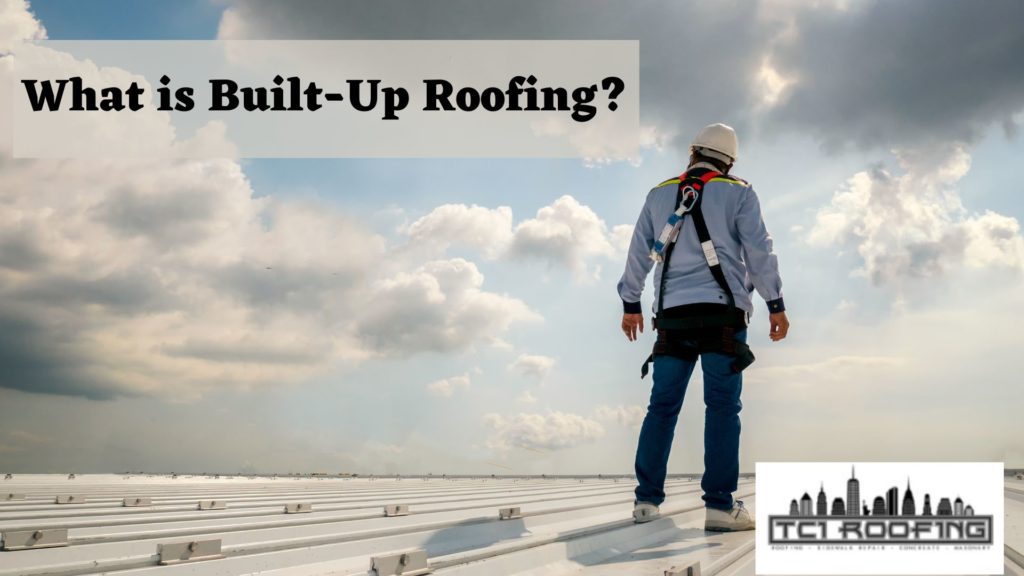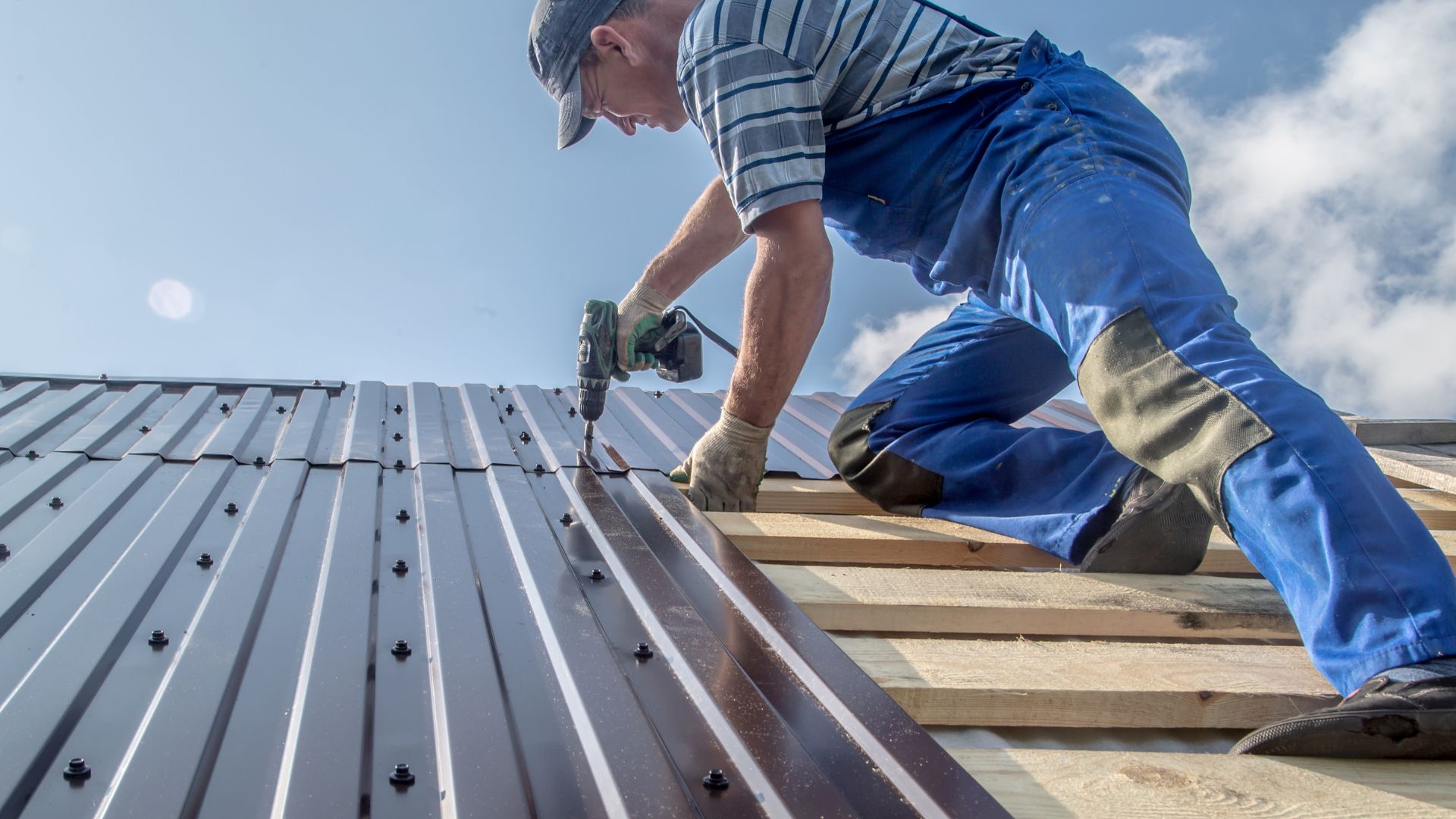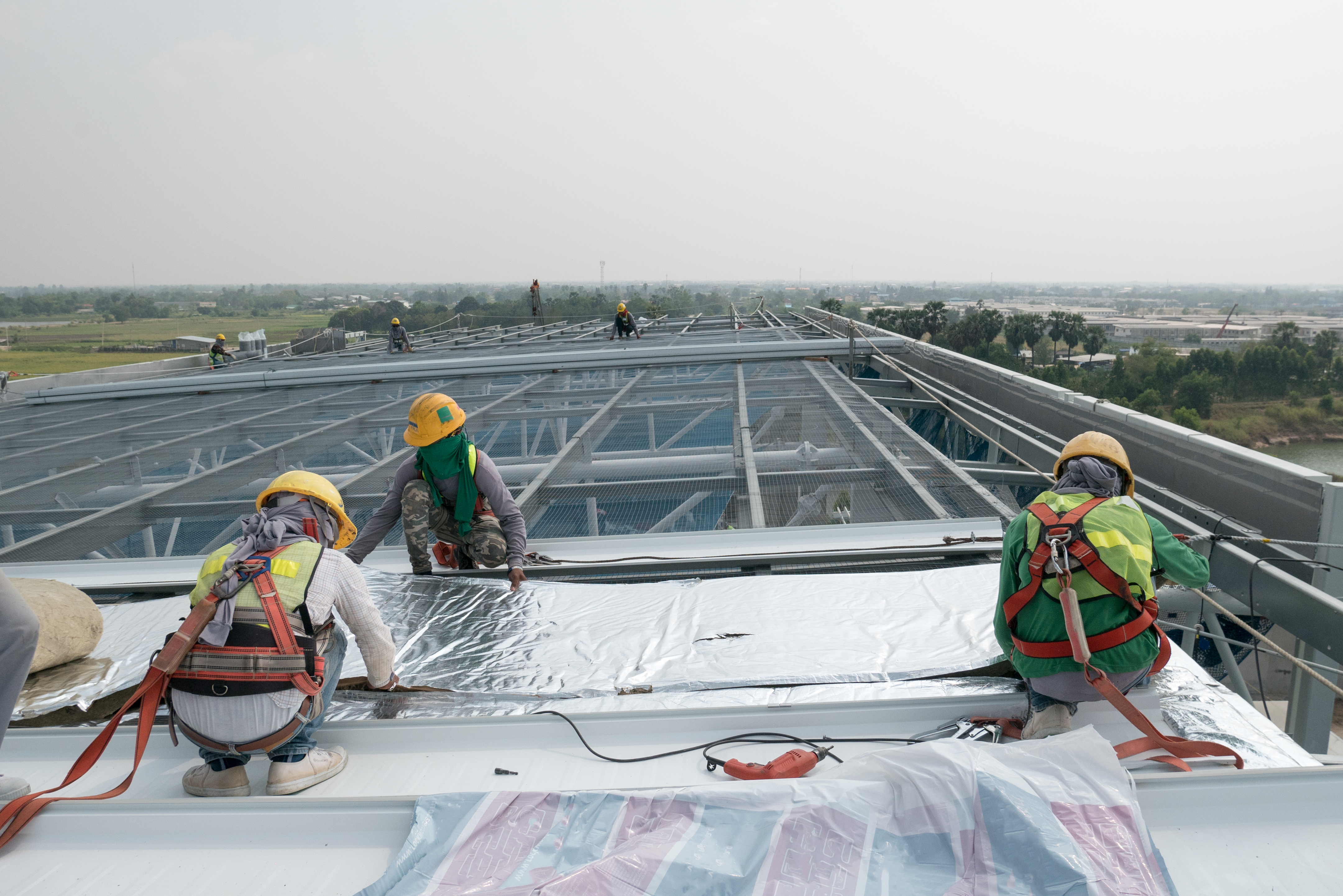One of the most widely used roofing methods for flat-roofed structures is built-up roofing, generally known as BUR. However, BUR systems are a bit complicated and need to be appropriately installed by teams of roofers. BUR is a distinctive roofing method for low-pitch or flat roofs.
Built-up roofing (BUR) is a system of fabric roofing panels that are layered, adhered to, and sealed using an industrial adhesive, such as asphalt, and then placed on top of a building’s flat roofing framework before being covered in aggregate material.
The cost is low, and it works well.
BUR is one of the finest solutions for many buildings, but there are many things to learn before applying it to a building. Before using BUR on any project, you should be familiar with this unusual roofing method. Examining built-up roofing in further detail will be helpful.
Should I Use Built-Up Roofing?
There are several reasons to use built-up roofing, but the most persuasive one is its low cost. BUR systems are less expensive than most other roofing methods, making them a sensible solution for many commercial structures.
Another reason to consider using BUR is its longevity. If installed and maintained correctly, a BUR system can last for decades. With proper care, a BUR system will continue to protect a building from the elements long after its initial installation.
BUR systems are also an excellent choice for buildings that experience high levels of foot traffic. This is because the fabric used in BUR systems is strong and can withstand constant abuse without showing signs of wear. This makes BUR an ideal roofing solution for office buildings, schools, and other structures with high foot traffic levels.
What Are The Components of a Built-Up Roofing System?
There are four primary components of a built-up roofing system:
1. A base sheet: This is the bottom layer of the roofing system and is typically made of asphalt-impregnated fiberglass or another robust and durable material.
2. A base ply: This is the second layer of the roofing system and is typically made of asphalt-saturated felt.
3. A cap sheet: This is the top layer of the roofing system and is usually made of gravel-surfaced asphalt.
4. A surfacing material: this is applied over the top of the cap sheet and helps protect the roofing system from ultraviolet light and other elements.
These four components work together to create a robust and durable roofing system that can withstand the elements and foot traffic. When installed correctly, a built-up roofing system will last for decades.
What Are the Benefits of Using Built-up Roofing Membrane?
There are several benefits to using a built-up roofing membrane, but the most persuasive one is its low cost. BUR systems are less expensive than most other roofing methods, making them a sensible solution for many commercial structures and cover boards for roof decking.
Another reason to consider using BUR is its longevity. If installed and maintained correctly, a BUR system can last for decades. With proper care, a BUR system will continue to protect a building from the elements long after its initial installation.
BUR systems are also an excellent choice for buildings that experience high levels of foot traffic. This is because the fabric used in BUR systems is strong and can withstand constant abuse without showing signs of wear. This makes BUR an ideal roofing solution for office buildings, flat surfaces, low slope roofs, schools, and other structures with high foot traffic levels with a cover board.
How Much Does Built-Up Asphalt Roofing Cost?
The cost of a built-up asphalt roofing system will vary depending on the size and scope of the project. However, built-up asphalt roofing systems are generally less expensive commercial roofing than most other roofing methods. This makes them a sensible solution for many commercial structures.
To get an accurate estimate of the cost of a built-up asphalt roofing system, contact a licensed and experienced contractor. They will be able to assess the project and provide a detailed estimate of the costs.
Is built-up roofing energy efficient?
Yes, built up roof is an energy-efficient roofing option than hot asphalt. The gravel surface of the roof reflects sunlight and helps keep the building cool in the summer months. This can help reduce energy costs and make the building more comfortable for occupants. Today, most built-up roofing systems include a layer with high reflectivity. This provides UV protection and contributes to preserving a cool building temperature. As a result, you’ll use less energy because you won’t need to operate the heating and cooling as frequently.
How Good are Built-Up Roofing Materials to Use?
The materials used in a built-up roofing system should be chosen based on the climate and the structure’s specific needs. In general, most built-up roofing systems includes multiple layers, a base sheet, a base ply sheets, a cap sheet, and a surfacing material.
The base sheet is typically made of asphalt-impregnated fiberglass or another robust and durable material. The base ply is usually made of asphalt-saturated felt, while the cap sheet is generally made of gravel-surfaced asphalt. The surfacing material is applied over the top of the cap sheet and helps protect the roofing system from ultraviolet light and other elements.
When choosing for a built-up roofing materials system, working with a licensed and experienced contractor is essential. They will be able to assess the project’s needs and recommend the best materials for the job.
How Does My Built-Roofing System Provide Added Protection?
A built-up roofing system is a durable and long-lasting roofing solution. The materials used in a built-up roofing system are resistant to ultraviolet light, wind, and other elements. When installed correctly, a built-up roofing system will last for decades. In addition to its durability, a built-up roofing system provides excellent protection against the elements.
The gravel surface of the roof helps reflect sunlight and keeps the building cool in the summer months. This can help reduce energy costs and make the building more comfortable for occupants. Today, most built-up roofing systems include a layer with high reflectivity. This provides UV protection. and contributes to preserving a cool building temperature. As a result, you’ll use less energy because you won’t need to operate the heating and cooling as frequently.
Is Built-up Roofing Economical?
Yes, built-up roofs are an economical roofing solution. The initial cost of a built-up roofing system is generally lower than most other roofing methods and roof insulation. In addition, built-up roofing systems are low-maintenance and have a long lifespan. This makes them a cost-effective option for many commercial structures.
Thoughts
In conclusion, built-up roofing systems are a sensible solution for many commercial structures like your roof deck. They are durable, low-maintenance, and energy-efficient. If you are considering a built-up asphalt coating roofing system for your commercial installation, contact a licensed and experienced contractor. They will be able to assess the project and provide a detailed estimate of the costs of roof systems.




